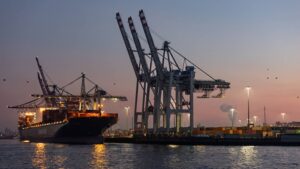Understanding Value-Added Taxes (VAT): A Deep Dive for Investors
In today’s increasingly interconnected world, understanding the nuances of international trade policies is crucial not just for economists and policymakers, but for investors and everyday consumers alike. Recent events surrounding President Donald Trump’s proposed reciprocal tariffs highlight a key point of contention: the value-added tax (VAT). As a member of the Extreme Investor Network community, it’s essential you grasp what VATs are, how they differ from tariffs, and what implications they carry for your investments.
What Are Value-Added Taxes (VAT)?
A VAT is essentially a consumption tax that is levied on the value added to a product at each stage of its production and distribution. This practice is synonymous with retail sales tax in the United States, but VATs are notably more widespread—over 80% of nations globally employ them. According to data from the European Commission, more than 170 countries utilize VAT as their primary form of consumption tax.
In the U.S., however, the retail sales tax remains the dominant tax model, which places the country in a unique (and often disadvantageous) position compared to its global counterparts. Countries like Sweden and Canada usually impose VAT rates ranging from 5% to 27%, while the average state and local sales tax rate in the U.S. hovers around 7.5%. This difference in tax structures can impact trade relations, affecting everything from product pricing to overall market competitiveness.
Why Tariffs Shouldn’t Target VATs
One of the main criticisms of implementing tariffs in response to VATs, as highlighted by economist Erica York, is that it misunderstands the nature of these taxes. Tariffs are often protectionist measures that specifically target foreign goods, thereby creating a competitive disadvantage. VATs, on the other hand, do not discriminate based on the origin of products; both domestic and imported items incur the same tax. This neutrality means that retaliating against VATs could create unnecessary trade friction without achieving intended economic goals.
Economists like Bradley Saunders emphasize that VATs are not inherently protectionist. These taxes apply equally to local and imported goods, and their implementation is more about revenue generation than trade manipulation. Recognizing this distinction is essential for investors looking to navigate the changing landscape of international trade.
The Difference Between VAT and U.S. Sales Tax
While both VAT and U.S. sales tax are classified as taxes on general consumption by the OECD, they operate differently. U.S. consumers pay their sales tax at the point of purchase, while VAT is collected throughout the production process. Businesses in the supply chain remit VAT based on the value they add, allowing for a more gradual tax burden that ultimately falls on the consumer.
This system also features a critical advantage: VATs are "border adjustable." This means that exports can be exempt from VAT while imports are taxed. Such a structure is viewed favorably by the World Trade Organization, and most economists agree that it does not constitute a trade barrier. This makes VATs an important consideration for manufacturers and investors engaged in global trade, as they have significant implications for pricing and profit margins.
The Bigger Picture: Implications for Your Investments
For those aligning their investments with global market trends, understanding VAT dynamics is essential. The current discussions around tariffs and VATs are not just political debates but pivotal moments that could influence market volatility and economic prospects.
-
Consumer Impact: Changes in tariffs or VAT structures can affect consumer prices directly. Investors should remain vigilant about how these policies shift consumer behavior and, consequently, sales figures.
-
Industry Focus: Certain sectors may be more susceptible to changes in tariff policies. For example, industries reliant on imports could suffer from increased costs, while exporters could benefit from reduced VAT burdens.
- Global Trade Relationships: As international relations evolve, staying informed about VAT and tariff implications can help identify opportunities or risks in global markets.
Joining the Extreme Investor Network means you’ll have access to in-depth resources and expert insights. Understanding the nuances of taxes like VAT amidst policies such as tariffs can set you apart from other investors.
Stay informed, remain strategic, and take actionable steps towards securing your financial future. As we navigate these complexities, remember that knowledge is power—and understanding the global tax landscape is a crucial aspect of making informed investment decisions.
This refined content not only provides the necessary information about VAT and tariffs but also contextualizes the discussion within a framework that appeals to the interests and needs of investors, distinguishing itself effectively from other sources.

